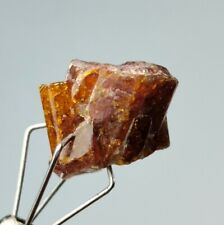
At current consumption rates, known deposits of rare earth elements (REE) in the United States are sufficient for 1,300 years, according to the first-ever nationwide estimate of these elements by the U.S. Geological Survey. The new estimate is part of a larger Department of Defense report focusing on the status and security of domestic and global supply chains.
Currently, 96 percent of REE are produced by China.
The report describes significant deposits of REE in 14 states, with the largest known REE deposits at Mountain Pass, Calif.; Bokan Mountain, Alaska; and the Bear Lodge Mountains, Wyoming.
Additional states with known REE deposits include Colorado, Florida, Georgia, Idaho, Illinois, Missouri, Nebraska, New Mexico, New York, North Carolina, and South Carolina.
“This is the first detailed assessment of rare earth elements for the entire nation, describing deposits throughout the United States,” said USGS Director Marcia McNutt. “Although many of these deposits have yet to be proven, at recent domestic consumption rates of about 10,000 metric tons annually, the US deposits have the potential to meet our needs for years to come.”
Despite their name, rare earths are relatively common within the earth’s crust, but because of their geochemical properties, they are not often found in economically exploitable concentrations. Hard-rock deposits yield the most economically exploitable concentrations of REE.
USGS researchers also analyzed two other types of REE deposits: placer and phosphorite deposits. Placer deposits are alluvial formations of sandy sediments, which often contain concentrations of heavy, dense minerals, some containing REE. Phosphorite deposits, which mostly occur in the southeastern U.S., contain large amounts of phosphate-bearing minerals. These phosphates can yield yttrium and lanthanum.
Related:
Metals Shortage Looming
Mansfield’s Earth Formation Hypothesis
Hot spots from outer space

















Comments are closed.